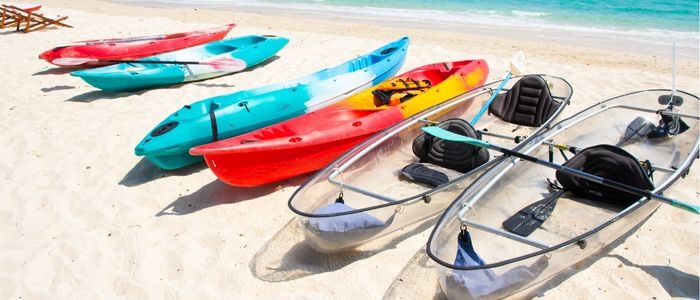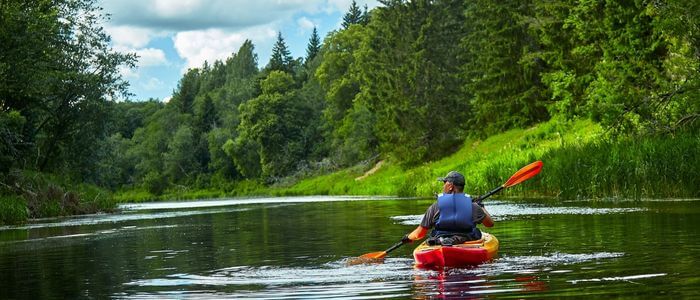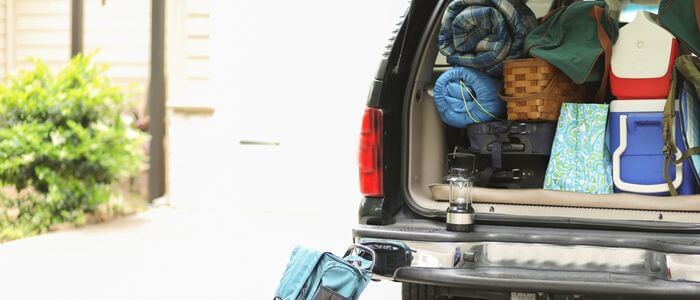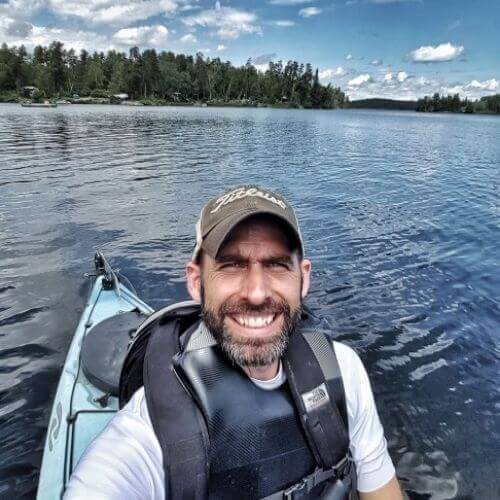
When most people think of Kayaking, they imagine a peaceful day spent paddling on a small river or lake. But what if you want to go on a longer trip? How do you plan a long-distance kayaking trip? This blog post will discuss everything you need to know before embarking on your next big adventure.
We’ll cover everything from route planning to water safety tips. So whether you’re an experienced kayaker or just getting started, read on for the information you need to make your long-distance kayaking dreams a reality!

Taking a long-distance kayaking trip can be an amazing experience. It’s a great way to see new places and explore areas you wouldn’t be able to reach by any other means.
However, before you set out on your adventure, there are a few things you need to keep in mind. First, make sure you have the proper equipment. A good kayak, life jacket, and paddles are essential. Second, plan your route carefully.
You’ll need to consider the weather, tides, and currents. Third, pack light but wisely. You’ll want to bring enough food and supplies to last the trip, but you don’t want to overload your kayak.
Fourth, be prepared for emergencies. Bring a first-aid kit and plenty of water. And finally, have fun! A long-distance kayaking trip can be an incredible journey.
Just be sure to plan and paddle safely.
Now that you know what to do before setting out on your long-distance kayaking trip, let’s discuss how to plan the trip.
Here are a few things to keep in mind:

No matter what kind of kayaking trip you’re planning, it’s always important to research and prepare before setting out on your adventure. If you’re planning a longer trip, there are a few extra things you’ll want to keep in mind to ensure a safe and successful journey.
First, you’ll need to make sure you have the right gear. In addition to a kayak and life jacket, you’ll also need a paddle, camping gear, food, and water. Packaging a first-aid kit and other supplies in an emergency is also a good idea.
Next, you’ll need to pick the right destination. When choosing a location, consider things like the weather, the level of difficulty of the route, and whether there are any hazards along the way.
Finally, it’s important to have a plan for your trip. This means mapping out your route and ensuring you know where to stop each night. It’s also important that someone else knows your itinerary in an emergency.
By following these tips, you can be sure that you’re well-prepared for your long-distance kayaking trip. You’re sure to have a safe and enjoyable journey with some planning and preparation.
When planning a long-distance kayaking trip, it is important to consider your fitness level and objectives. If you are new to Kayaking, it is best to start with shorter trips and gradually build up your endurance.
Conversely, if you are an experienced paddler, you will be able to handle longer journeys. In either case, it is important to plan your trip so you can paddle at a comfortable pace and enjoy the scenery.
Kayaking is a great way to explore new areas and get some exercise, but it can be expensive if you’re not careful. If you’re planning a long-distance kayaking trip, you can do a few things to keep costs down.
One of the most important things is to set a realistic budget. Figure out how much you can realistically afford to spend on the trip, and then stick to it. That means being mindful of transportation, lodging, food, and equipment rentals.
Transportation is often one of the biggest expenses when planning a kayaking trip. If you can, try to find an inexpensive way to get to your destination. For example, you might be able to take a bus or train instead of flying. And once you’re at your destination, see if there’s a way to rent kayaks or other gear instead of buying it.
Of course, food is another necessary expense. But you can save money by packing your meals instead of always eating out. And if you’re camping, plenty of affordable meal options can be made over a campfire.
By following these tips, you should be able to plan an enjoyable and budget-friendly kayaking trip. So get out there and explore all that nature has to offer!
When most people think of Kayaking, they think of leisurely paddling around a lake or down a slow-moving river. However, for those with a sense of adventure, Kayaking can also be a means of exploring remote areas and getting away from it all.
If you’re planning a long-distance kayaking trip, there are a few things you’ll need to consider. First, you’ll need to choose a challenging and realistic route. Plenty of long-distance kayaking routes are available online, or you can speak to local kayakers to get ideas.
Once you’ve settled on a route, you’ll need to start planning your logistics. How many days do you have to complete the trip? How will you carry all your gear? What kind of camping gear will you need?
Answering these questions will help you create a comprehensive plan and ensure your trip is as enjoyable as possible.
Kayaking is often considered a solo activity but can be just as much fun with a friend or two. When planning a long-distance kayaking trip, having at least one other person with you is best.
Not only will this make the trip more enjoyable, but it will also help to keep you safe. If something goes wrong, having someone else there can be the difference between life and death.
Of course, Kayaking with a partner also has its challenges. You’ll need to communicate well and work together as a team. But if you can do that, you will surely have an amazing experience.
If you’re new to Kayaking, you might be tempted to buy all the gear you need for your trip. However, this can be a costly mistake. Not only is kayaking equipment expensive, but it can also be difficult to transport.
A better option is to rent your kayaks and other gear from a local outfitter. This way, you’ll save money, and you won’t have to worry about lugging all your gear around.
Of course, renting gear comes with its own set of challenges. You’ll need to ensure you get the right size kayaks and that they’re in good condition. But if you do your research ahead of time, you should be able to find a reputable outfitter who can provide you with everything you need.
No matter how well you plan, there’s always a chance that something will go wrong on your trip. That’s why it’s important to have a backup plan in place.
For example, what will you do if one of your kayaks springs a leak? Or if you get lost in the wilderness?
By planning these eventualities, you can rest assured that you’re prepared for anything. And if things go wrong, you’ll be able to quickly and easily get back on track.
One of the best things about Kayaking is its relatively flexible activity. This means you can change your plans if you need to.
For example, if you get tired halfway through your trip, you can always take a break or turn around and head back to camp. Or, if the weather takes a turn for the worse, you can adjust your route accordingly.
The key is not to get too bogged down in your plans. Yes, having an itinerary is important, but don’t be afraid to deviate from it if necessary. After all, part of the fun of Kayaking is being able to go with the flow.
Before setting out on your trip, it’s important to do your research. This means learning about the area you’ll be kayaking in and staying up to date on the weather forecast.
By knowing what to expect, you can avoid surprises and plan accordingly. For example, if you’re kayaking in an area with dangerous wildlife, you’ll need to take extra precautions. And if the weather looks particularly bad, you might need to alter your route or postpone your trip.
No matter what, it’s always better to be safe than sorry. So before hitting the water, ensure you know what you’re getting yourself into.
If you’re kayaking with a partner, there will be times when you need to switch boats. For example, if one of you gets tired or needs a break, you’ll need to find a way to store your kayak while the other person continues.
There are a few different ways to do this. One option is to tie your kayak to a tree. Another is to find a shallow spot where you can leave your kayak safely submerged.
Whichever method you choose, test it out ahead of time. That way, you’ll know it will work when needed.
Kayaking is a physically demanding activity. So it’s important to stay on top of your health and well-being while on the water.
One of the most important things you can do is to stay hydrated. Be sure to drink plenty of water throughout the day, especially in hot weather. And if you start to feel thirsty, that’s a sign that you need to drink more.
Eating regularly is also important. Kayaking can be an intense workout, so you’ll need to get enough calories—pack snacks and meals high in energy and easy to eat on the go. And if you start to feel tired, take a break and rest until you’re feeling better.
Last but not least, don’t forget to practice self-care. This means taking care of your body and mind on and off the water.
Be sure to sleep well, eat healthy meals, and take breaks when needed. And if you start to feel overwhelmed or stressed, take a few deep breaths and remember why you’re doing this in the first place.
Of course, even with the best self-care habits, there will be days when you need a little extra rest. That’s why planning for rest days throughout your trip is important. On these days, you can relax, read a book, go for a hike, or do whatever else you need to recharge.
So now you know how to plan a long-distance kayaking trip but what other tips can help make your trip more enjoyable? Here are a few ideas to get you started:
Find the Right Kayak for the Trip: Not all kayaks are created equal. Different kayaks are better suited for different purposes. So if you’re planning a long-distance trip, find a kayak that’s up for the challenge.
Don’t forget to Pack the Right Clothes: Packing the right clothes is crucial for any outdoor adventure. But it’s especially important for Kayaking. Be sure to pack quick-drying clothes that won’t weigh you down if they get wet. And if you’re kayaking in cold weather, don’t forget to pack extra layers to stay warm.
Keep it Simple yet Effective: When it comes to Kayaking, less is often more. So don’t overcomplicate things. Stick to a simple route and stick to the basics. This will help you stay safe and have more fun on your trip.
Don’t Forget your Food and Other Supplies: This one goes without saying, but it’s important to ensure you have enough food and water for your trip. And don’t forget to pack other supplies like a first-aid kit, map, and compass.
Stay Hydrated: As with any physical activity, it’s important to stay hydrated when kayaking. Be sure to drink plenty of water throughout the day and pack extra in case of trouble.
Don’t Forget Sunscreen and a First Aid Kit: Kayaking can be a great way to get some sun. But don’t forget to pack sunscreen to protect yourself from harmful UV rays. And don’t forget a first-aid kit if you run into any problems.
So that’s how you can plan long-distance kayaking trips. As you can see, there’s much to think about before embarking on a long-distance kayaking trip. But if you take the time to plan and prepare, it will be an incredible experience you’ll remember forever.

Hey there kayak lovers! I’m Jay Schwartz, the author here at Kayak Guidance! You know water sports – you know me! My life is all about it. Kayaking, Paddleboarding, Fishing, Snorkeling and so much more. I love to share my passion and knowledge with all of you.

Hey there kayak lovers! I’m Jay Schwartz, the author here at Kayak Guidance! You know water sports – you know me! My life is all about it. Kayaking, Paddleboarding, Fishing, Snorkeling and so much more. I love to share my passion and knowledge with all of you.

Welcome to KayakGuidance.com! If you’re looking to have some fun outdoor water adventures, then you have come to the right place. We help our readers find the best kayaks and water related equipment to help you have the best time of your life whenever you are engaging in water activities.
This site is a participant in the Amazon services LLC associates program, an affiliate advertising program designed to provide a means for sites to earn advertising fees by advertising and linking to Amazon.com.